What is most valuable?
- Nimble InfoSight is an extremely powerful and useful tool. We log in daily to look at any new alerts, mostly ones that have been cleared without us needing to do anything, as well as using it as a capacity management tool and executive dashboards to present information to our senior management team.
- Other than InfoSight, Nimble snapshotting and replications, as well as the zero-byte cloning, are invaluable to us as a company and has greatly improved our offerings to clients over our previous storage vendor.
- We also like the new VMVision. This grabs stats from our entire VMware environment and allows us to troubleshoot all levels of our environment in one view. This helps to diagnose where the issues lie, either storage, network or the hosts themselves. This has been absolutely invaluable when we have separate teams managing each part.
How has it helped my organization?
We supply hourly (or more frequent) snapshots on our private hosted clients. Under the previous vendor’s arrays, there was large management overhead to keep these working.
Since switching to Nimble arrays, we have not only been able to keep triple the amount of snapshots as standard, using, on average, around 70% less space than keeping 8 on the previous arrays, but the management overhead to keep these going has dropped down to about five minutes a month. Now, using InfoSight, we can see at a glance what we have.
What needs improvement?
There is not a lot of room for improvement. All the items that we wanted to have implemented when we first started using Nimble arrays were either already on their road map, or added after listening to us, and all bar one have now been fully implemented.
These included:
- Active Directory authentication for logging into the management of the array.
- Full audit logging of all actions taken on the array.
- Full VMware implementation for managing the arrays. This has and will continue to save us a lot of time.
For how long have I used the solution?
We have now been using Nimble Storage arrays for almost four years. We started with two arrays and now have 16, and support a further eight at client sites.
Buyer's Guide
HPE Nimble Storage
April 2025
Learn what your peers think about HPE Nimble Storage. Get advice and tips from experienced pros sharing their opinions. Updated: April 2025.
848,716 professionals have used our research since 2012.
What do I think about the stability of the solution?
We have never had any stability issues. The Nimble arrays have survived an awful lot within our environment. We now have 16 arrays and other than a single hard drive failure and a precautionary controller swap (predictive analysis from InfoSight flagged a potential issue, so Nimble replaced the controller rather than risk downtime), the Nimble arrays have been our most reliable hardware.
What do I think about the scalability of the solution?
We have never encountered scalability issues. Using InfoSight to help plan capacity, we know way in advance what we will need to increase performance or capacity. When we need to either increase capacity or performance, all upgrades are performed so simply and with zero down time.
How are customer service and support?
The technical support from Nimble is second to none. Whenever we have called them, we get straight through to a technician, who does not follow a script designed to frustrate you and waste all your time. They listen to your problem, and what, if anything, you have already tried. Then they help and most of the time, any issues are resolved there and then on a single call. Sometimes we have called them simply because we do not understand something, or even a new feature that we wanted to use, and they are happy to dedicate time to us to explain and show us how to do what we want. We have never had an ongoing ticket with Nimble other than when they are awaiting a response or action from us, that we can only perform during weekends.
Which solution did I use previously and why did I switch?
We used to use a different storage vendor. The two main reasons we changed were the terrible levels of support we received from the previous company and the arrays' performance. The support was important because once, when we had an issue with an array, we had a six-hour outage and the issue prevented DR as well as production environments working. The support was terrible, and it took months to finally resolve the issue.
Performance-wise, the arrays we had were simply not sufficient for our growing environment and the needs of our newer larger clients coming into our infrastructure. This, coupled with the management overhead required to simply keep the plates spinning on these arrays, prompted us to find a more-reliable, better-performing partner with a better support ethos.
How was the initial setup?
When we first started speaking to Nimble, they sent us two trial devices so we could truly perform a PoC that matched our planned deployment. They also sent a senior engineer along for a day to assist us in setting it up. The engineer ended up not really being needed as the array setup is very simple. There are two methods, both shown to us by the engineers.
Since the initial setup, all arrays have been configured by my in-house technicians and usually an array is fully configured, and up and running within half an hour (this doesn’t include time to get it in our racks and patched). After accidentally shipping our arrays to the wrong sites, we were able to easily and remotely talk others through the reconfiguration.
What's my experience with pricing, setup cost, and licensing?
The pricing for the arrays is very transparent. There is one cost for the array, and another for support. There are zero licensing costs. Whatever you pay for the array, you get all features included with full access to their InfoSight, knowledge base and downloads. It’s a very simple model, which our finance team love.
Which other solutions did I evaluate?
When we went to market, the team already had a good knowledge of other vendors, having used a good variety of arrays between us. Nimble were the first new array we got in to test. They blew us away with their performance and their support. The personal touch they gave us really helped, too. They took the time to learn about our needs and our environment. It was easy to decide not to go to anyone else.
What other advice do I have?
If you’re looking to implement, ask for a trial; Nimble have been very accommodating with us and others. Their products speak for themselves and will show that the figures they post are actually lower than the performance you can get out their arrays. Speak to any Nimble client. There are lot that are happy to take reference calls. This alone speaks volumes for them as a company.
Disclosure: PeerSpot contacted the reviewer to collect the review and to validate authenticity. The reviewer was referred by the vendor, but the review is not subject to editing or approval by the vendor.


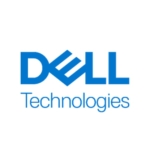
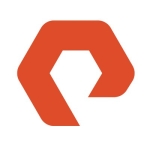



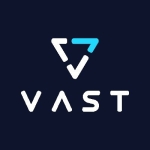
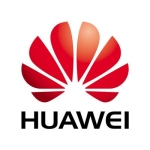

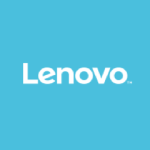

Great review. I hope the one to many comes soon also as it would help us. I believe that Version 4 of the OS is when it is targeted for but not sure. Will be interesting to see where they go now being HPE.